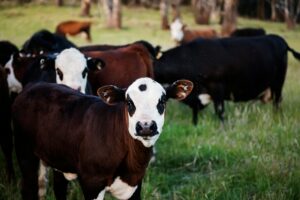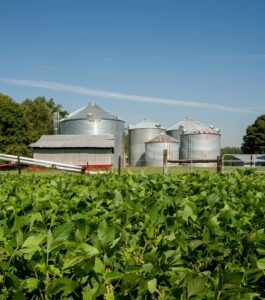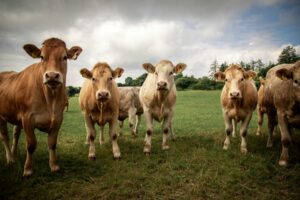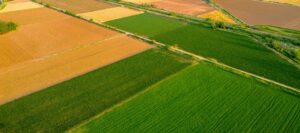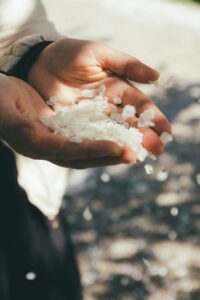Introduction
Canola, Brassica Napus, (also known as rapeseed) is an oilseed crop. It is an excellent rotation crop, and should be used to increase profits of crops such as maize and wheat. Advantages include the lowering of root knot nematodes and Phytophtera.
The growing of canola needs good management. Special care should be taken with harvesting of the small pips. Road and rail trucks need to be sealed tightly in order to prevent losses in transit.
Canola is primarily used for manufacturing of the following:
- Canola oil (crude oil and bottled oil-used as a salad and frying oil, in margarines, shortenings and in foods that contain vegetable oil such as baked goods, potato chips, French fries, etc.).
- Canola oil biodiesel
- Canola based mayonnaise
- Canola oil cake
- Canola meal (the by-product of canola oil processing, used as a high protein feed ingredient in the rations of animals)
- Canola can be used for forage for pigs and poultry.
Source: Canola Market Value Chain Profile at www.nda.gov.za and Canola brochure from the same website.
International business environment
The major producer of canola is Canada, followed by the EU, China and India. The major exporter is Canada with the EU a distant second. The EU, China, and Japan are the major importers (USDA, 2025).
The Bureau for Food and Agricultural Policy (BFAP) Baselines 2025-2034 includes a study of domestic canola yields compared to international counterparts: 2019-2023.
FURTHER REFERENCE:
- Find the monthly “Oilseeds: World Markets and Trade” on the United States Department of Agriculture’s Foreign Agricultural Service Home Page. The address is www.fas.usda.gov.
- www.canola-council.org – Canola Council of Canada
- www.canolainfo.org – a Canadian website for “everyone who wants to know more about the world’s healthiest oil”.
- Oilseed information is also available on the Oil World website www.oilworld.biz.
SOUTH AFRICA: IMPORT AND EXPORT
South Africa exported 27 000 tonnes to non-GMO markets such as Europe and Kenya (BFAP, 2025).
Canola, does not enjoy any tariff protection. (Barley, a fellow winter crop, is pegged to the wheat price, which enjoys some tariff protection).
Local business environment
The canola marketing season in South Africa commences on 1 October and ends on 30 September the following year.
Canola is an oilseed crop grown mainly in the winter rainfall regions of the Western Cape, although it is also farmed in the North West, Limpopo and Northern Cape provinces.
It is used primarily for the manufacturing of canola oil and oil cake. Canola is crushed mostly for the vegetable oil market, but it also provides an attractive alternative source of protein for animal feed, particularly in the Western Cape, where it is produced and processed.
It competes with barley and wheat when farmers choose what to grow, and with other plant oils, mainly sunflower oil and soy oil, for the local market. Production went from 78 050 hectares in 2015 to 145 000 hectares in 2024, an annual rate of nearly 8.0% (BFAP, 2025). South Africa produced 245 000 tonnes of canola between 2022 and 2024 (BFAP, 2025).
Local processing capacity has been undergoing upgrades, and a new crushing facility was commissioned in Malmesbury in June 2024 (BFAP, 2025).
Regarding its potential for biofuels, refer to the block below.
The case for canola-based biodiesel
According to Petrus Fouché, canola is a crop with enormous economic potential for producing biodiesel.
- Diesel based on other feedstock freezes as low as – 5 to -8ºC. Canola based biodiesel is safe as far down as -22ºC and meets the strict EU quality specifications.
- In contrast to food or biofuel, with canola it is food and biofuel, as 60 % of the crop is used for feed, while the crop rotation increases both maize and wheat yields for up to 4 years, thus increasing food production on less hectares. The added dual purpose pasture opportunity further increases food production.
- The oil content is higher than other feedstock used in South Africa i.e. 36 – 42 % vs. soybeans 20% & sunflower 30%
Sources: Canola Market Value Chain Profile at www.nda.gov.za and Canola brochure from the same website; Bureau for Food and Agricultural Policy (BFAP) Baselines 2025-2034, 2024-2033, 2023-2032; correspondence from Petrus Fouche.
Further reference:
- Statistics (e.g. crop estimates, export/import etc) may be found at www.nda.gov.za and www.sagis.org.za. See also the Monthly Bulletin on the SAGIS website.
- Find the Grading Regulations for canola and the requirements for grain exports at http://agbizgrain.co.za.
For the newcomer
- The “Brochure Canola” and “Production guidelines canola” provide grower notes covering climatic requirements, soil requirements, planting fertilisation, irrigation, weed control, harvesting etc at www.nda.gov.za.
- Find the videos on growing canola at www.opot.co.za, website of the Oil and Protein Seeds Development Trust (OPDT).
National strategy and government contact
- Department of Agriculture Directorate Plant Production www.nda.gov.za
- National Agricultural Marketing Council (NAMC) www.namc.co.za
Role players
View the Premium Listings below (scroll down or click on “Premium Listings” on the Table of Contents to the right).
Further reference:
- Find a list of role players under the “Co-workers” option at www.sagis.org.za.
Training and research
- Refer to the “Agricultural education & training” page for universities, agricultural colleges and other sources of training.
Websites and publications
Visit the websites listed earlier on this page.
- Find the annual Canola Market Value Chain Profile on the Department of Agriculture Directorate Marketing web pages at www.nda.gov.za
- CD Roms from the ARC-PHP (Plant Health and Protection) include: (i) Crop Pests, Vol. 4: Field Crops and Pastures Pastures (ii) Medically Important Spiders And Scorpions Of Southern Africa. Write to booksales [at] arc.agric.za or infopri [at] arc.agric.za.
- Find the latest BFAP Baseline Agricultural Outlook at www.bfap.co.za.
- Consult the AgriSETA Learner Guide Primary Agriculture “Harvesting agricultural crops”.
- Find the Canola Growers’ Manual on the website of the Canola Council of Canada, www.canolacouncil.org.
- Find the canola grower notes at www.nda.gov.za.
- Production guidelines can also be found on www.overbergagri.co.za.
- Canolafokus and Oilseeds Focus are two publications available from the Protein Research Foundation. Download them at www.proteinresearch.net and www.opot.co.za. Find other resources here too like videos of presentations, grower notes etc.
- www.sagis.org.za – the SAGIS website for statistics (national stocks, producer deliveries, imports, exports, consumption, weekly parity prices, historical information, etc.)
Some articles:
- Find canola articles and the research database at www.opot.co.za.
- Sihlobo W. 2025, August 26. “Canola boom in South Africa?” Available at https://wandile.substack.com/p/canola-boom-in-south-africa
- Sihlobo W. 2025, May 18. “The rise of canola production in South Africa serves as an inspiration for other value chains”. Agriculural Economics Today. Available at https://wandilesihlobo.com/2025/05/18/the-rise-of-canola-production-in-south-africa-serves-as-an-inspiration-for-other-value-chains/
- Venna L. 2025, March 7. “SA set for record-breaking 2025-26 canola harvest.” Food for Mzansi. Available at www.foodformzansi.co.za/sa-set-for-record-breaking-2025-26-canola-harvest
- Staff Reporter. 2024, November 21. “Golden fields, promising yields as canola harvest blooms”. Food for Mzansi. Available at www.foodformzansi.co.za/golden-fields-promising-yields-as-canola-harvest-blooms/
- Tembo P. 2024, November 11. “Canola industry confronts climate shifts as harvest sets in”. Food for Mzansi. Available at www.foodformzansi.co.za/canola-industry-confronts-climate-shifts-as-harvest-sets-in/
- Sihlobo W. 2024, September 2. “Canola production in South Africa”. Agricultural Economics Today. Available at https://wandilesihlobo.com/2024/09/29/canola-production-in-south-africa
- Sihlobo W. 2024, September 2. “Progress in South Africa’s canola production”. Agricultural Economics Today. Available at https://wandilesihlobo.com/2024/09/02/progress-in-south-africas-canola-production
- Kriel G. 2020, December 11. “Canola: the crop that requires perfect planning”. Farmer’s Weekly. Available at www.farmersweekly.co.za/crops/field-crops/canola-the-crop-that-requires-perfect-planning/

